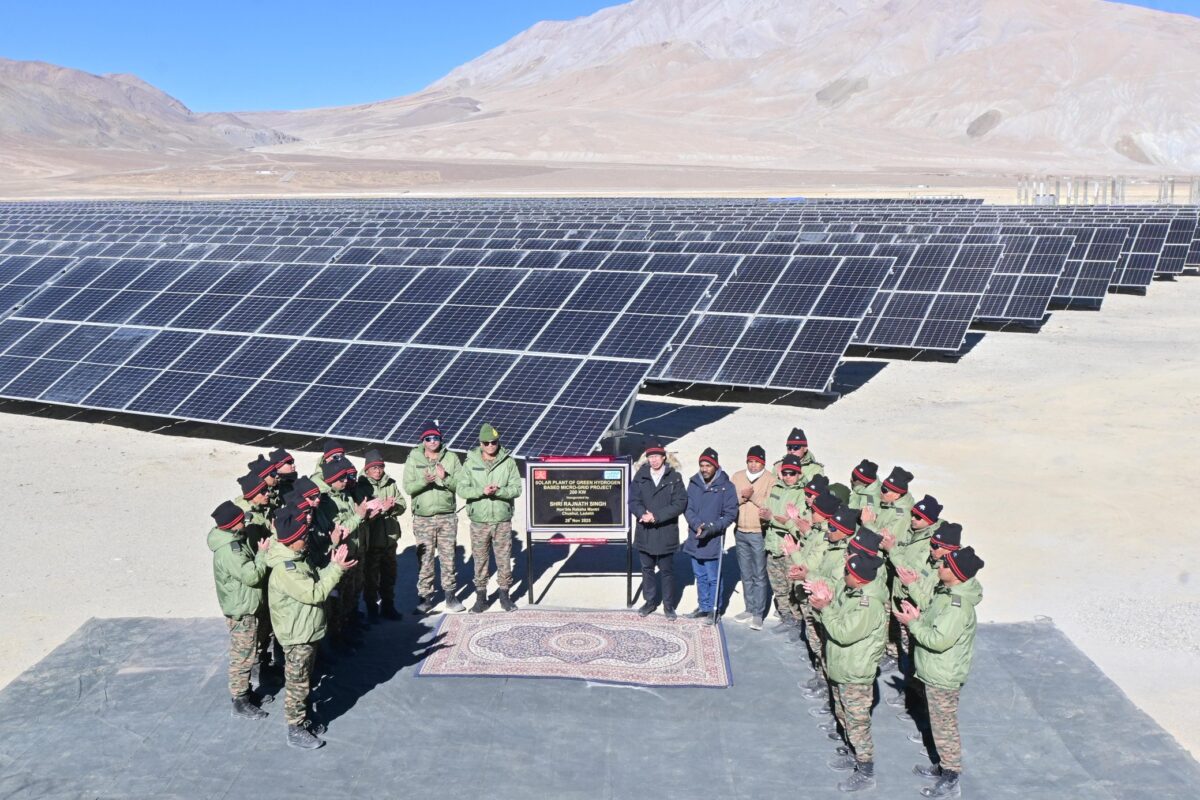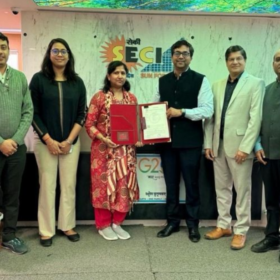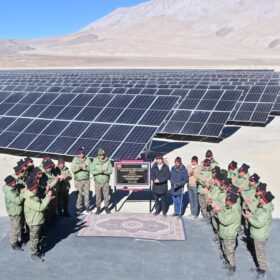pv magazine: How was the year 2020, in terms of rooftop solar installation in India?
Simarpreet Singh: The year 2020 has fallen short of expectations as far as capacity additions in the rooftop solar segment are concerned. The country added 883 MW of rooftop solar capacity in the first nine months of the year.
Though on the lower side than 2019, this performance could have been much better had it not been for the coronavirus-induced lockdown, which disrupted the supply chains and caused a shortage of labor, leading to delays in construction and restricted movement of equipment.
As things limped back to normal, with the lockdown opening in phases, the commercial and industrial categories did particularly well in the third quarter, making up some lost ground.
It is expected that the deficit will [have been] further bridged in the last quarter of 2020. Gujarat did particularly well in the rooftop solar segment this year thanks to the state government’s Surya Urja Rooftop Yojana, targeting residential consumers with attractive subsidies. Gujarat’s policy for micro, small and medium enterprises, allowing installation of solar projects with more than 100% of their sanctioned load, also worked quite well. In contrast, large scale installations were more severely affected this year.
What’s the case for rooftop solar over diesel and grid power, as businesses look for ways to cut costs?
There is a growing realization among industrial and commercial consumers about how rooftop solar can substantially reduce their electricity bills. While solar power had achieved grid parity long ago, it is becoming increasingly cheaper than conventional electricity, with solar tariff[s] hitting an all-time low of INR2 per unit for ground-mounted solar projects. The cost of rooftop solar is also witnessing a proportionate decline.
As for diesel, it works out to be costlier but is still widely used to run generator sets, in case of power cuts. However, solar photovoltaic-based captive power production is a much cleaner option than diesel-run backup power.
Rooftop solar not only provides freedom from power cuts but also works out to be significantly cheaper than both diesel and grid power. As an added incentive, captive power generators can monetize the gains by selling the surplus electricity through bi-metering.
What are the challenges to rooftop solar uptake, especially in the residential and SME sector?
The residential rooftop [sector] is still in its nascent stage. A lot of effort is required in terms of policies and business models for this particular segment to pick up growth.
The lack of awareness about rooftop solar as the best way to cut down on electricity costs is one of the biggest impediments. Most house owners are still under the wrong impression that rooftop solar works out to be expensive.
However, the residential market is expected to pick up in the coming years on account of better policy support and lowering of solar capital costs.
Coming to commercial and industrial installations, they have gained momentum in only the last few years. Rooftop solar uptake in the SME sector faces a host of challenges, like lack of awareness about the benefits of solar power as well as various business models for its deployment, and inadequate financing.
The rooftop solar segment also does not have a structured and standardized offering for SMEs in terms of asset quality, discouraging them from investing in rooftop solar assets that require more capital.
Financial institutions are also not comfortable with the credit and repayment risks associated with lending to SMEs.
Big corporates are the potential drivers for rooftop solar uptake. However, given that many operate from tall towers, can the entire tower’s electricity requirements be met through rooftop solar? How can the production and use of solar electricity be maximized? What are the module options to suit these requirements?
The answer lies in the optimization of space and the use of building-integrated photovoltaic (BIPV) systems. Optimally utilizing the surfaces of high-rise building[s] can make a big difference.
The rooftop and facades of the building can be installed with PV panels, to not only generate electricity but also reduce heat gain, thus substantially reducing the energy demand for air-conditioning.
Most of the high-rise buildings these days have a larger facade area, which can be used to install BIPV systems for more efficient on-site power generation and delivery. Vertical facades also offer the advantage of better operation and maintenance since dust does not accumulate on them.
What are customized solutions and how do these address consumers’ concerns?
Customized rooftop solar solutions for consumers in the residential, commercial and industrial categories are worked out through engineering, data and analytics to arrive at the most suitable option. Many factors are considered while installing the best-suited rooftop solar system, like the area available and amount of solar irradiation. The solar systems can be designed accordingly, to generate maximum electricity. For projects where space is a constraint, customized solutions may include single-axis trackers and bifacial modules, which help generate electricity from solar power much more efficiently.
Nowadays, we have customized plug-and-play rooftop solar kits powered by remote sensing technology, and the trend is fast catching [on].
The remote sensing technology has remained confined to mostly large rooftop solar installations, owing to its non-viability for small scale solar, from the business viewpoint. We, at Hartek Solar, have made the remote sensing technology commercially feasible for small scale plants as well, by linking it with consumers’ wi-fi or GPRS [general packet radio service, 2G and 3G data packets] SIM card, so that they can get alerts on cleaning and maintenance as well as real-time data on energy generation and savings.
The entire process is driven by an interface called Data Logger, which is synced with the inverter. Our engineers go to the plant site once the installation is done and download a mobile app for the user who, after signing up, can access details relating to power generation and savings. With the help of this interface, users can know about daily generation and access monthly and yearly generation reports. The interface also alerts users about the cleaning and preventive maintenance [requirements] of solar modules.
Such customized solutions, which cater to both gross metering and net metering consumers, offer various advantages, like easy installation [and] lower labor and maintenance costs on account of optimized design and non-invasive structure with roof protection pads that rule out any damage to RCC (reinforced cement concrete) roofs.
What role does technology play in designing the optimal rooftop solar system and its deployment and operation and maintenance in different situations? What are the gains for consumers?
Technology plays a significant role when it comes to designing an optimal rooftop solar system. The latest passivated emitter and rear cell (PERC) technology with monocrystalline solar panels, for instance, helps achieve higher energy conversion efficiency by adding a dielectric passivation layer on the rear of the cell. This layer enhances efficiency by reducing electron recombination and increasing solar cells’ ability to capture light.
The deployment of tilt angles for solar modules and widespread use of the fast-evolving solar tracking technologies and bifacial module systems have also been instrumental in making solar PV systems more efficient than ever before.
Another game-changer is the remote sensing technology, which alerts users about cleaning and preventive maintenance of their systems and gives regular updates about the amount of power they have generated and saved. High-quality inverters and storage systems for rooftop solar systems have also gone a long way in optimizing operations by reducing dependence on grid systems.
How is the Indian rooftop solar market likely to perform in 2021?
While renewable energy consultancy firm Bridge to India has lowered the projections for rooftop solar capacity additions, to 10.8 GW, for 2021, from 13.2 GW, things are fast returning to normal with restoration of supply chains, availability of labor and revival of pent-up demand.
Some experts even expect a strong rebound of rooftop solar installations, on account of these factors, by the second quarter of [the] year. This comeback will primarily be driven by the increase in demand for rooftop solar installations from commercial and industrial consumers, a trend that was visible in the last quarter of 2020 and is only likely to catch up in the coming months.
Bogged down by the financial constraints faced by them during the lockdown days, consumers of the commercial and industrial categories have now realized that going solar is the best way to cut down operational electricity costs and get respite from the high retail tariffs they continue to pay. No wonder commercial and industrial consumers made up … 95% of the new rooftop solar installations in 2020, and 2021 is not likely to be any different.
Most of this demand is likely to come from the agro, pharma, education and healthcare sectors. Many of the commercial and industrial consumers who have already installed rooftop solar plants are likely to go for capacity expansion of their solar facilities as they feel that rooftop solar is the cheapest source of electricity.
This content is protected by copyright and may not be reused. If you want to cooperate with us and would like to reuse some of our content, please contact: editors@pv-magazine.com.









Please full details Me in rooftop solar panel system..
Which is subsidy
Which time guarantee..
Detail in tell me marathi..